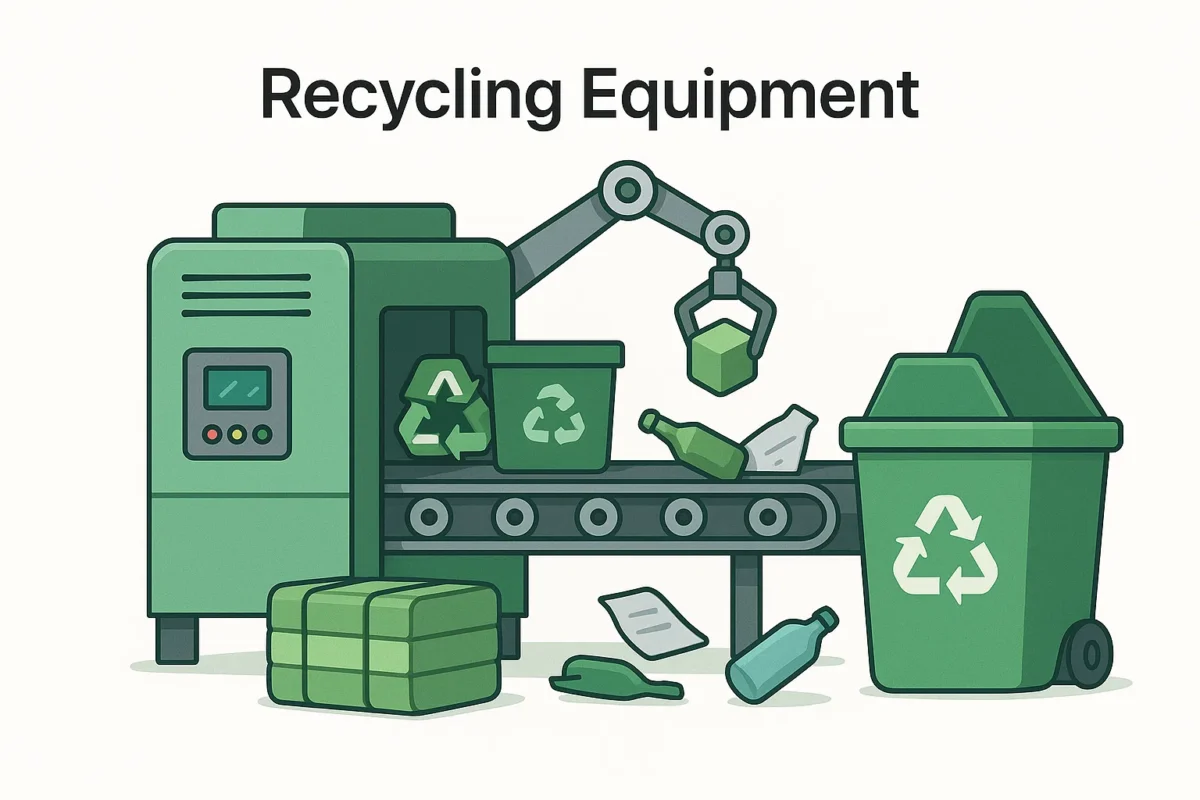In an era where sustainability is paramount, recycling has evolved into a sophisticated industry. At its heart lies powerful equipment. For any business aiming to optimize waste management, the right tools are the single most important step toward greater efficiency, cost savings, and a healthier planet.
How to Choose the Right Recycling Equipment: A Strategic Approach
Selecting the perfect equipment begins with a clear strategy. Consider these foundational factors to ensure you make an informed decision that aligns with your goals.
Identify Your Materials
What is the primary waste you will be processing? Is it paper, various plastics (PET, HDPE), metals, glass, bulky debris, or e-waste? Each requires different handling.
Assess Your Volume
The quantity of waste you process is critical. From a few hundred pounds a week to multiple tons per hour, volume determines the necessary capacity, size, and power.
Evaluate Space Availability
Meticulously measure your workspace. Ensure enough room for the machine’s footprint, operation, maintenance, and material flow.
Determine Automation Level
Your resources and efficiency goals will dictate the level of automation, from fully manual operations to semi- or fully-automated lines.
The Complete Spectrum of Recycling Equipment
Different materials and goals require different tools. Here is a comprehensive overview of the most essential types of recycling machinery, grouped by their primary function.
Part 1: Material Preparation & Size Reduction
Shredders
Purpose: To cut materials into smaller, uniform pieces for easier handling, recycling, or disposal.
Materials: Paper, plastic, metal, tires, wood, e-waste.
Uses: Document destruction, preparing materials for processing, breaking down bulky items.
Crushers
Purpose: To crush hard, dense materials into smaller, manageable fragments.
Materials: Glass, concrete, stone, some metals.
Uses: A cornerstone in construction/demolition waste recycling and glass processing.
Part 2: Separation, Cleaning, and Purification
Sorting Machines
Purpose: To separate mixed recyclables by type, size, color, or material. Systems can be manual, mechanical, or use advanced AI and optical sensors.
Uses: Indispensable in Material Recovery Facilities (MRFs) for clean, high-value streams.
Washing Systems
Purpose: To thoroughly clean recyclables to remove contaminants like dirt, food residue, glue, and labels.
Uses: Crucial in plastic and glass recycling, as purity is key to the final product’s quality.
Part 3: Volume Reduction & Densification
Balers
Purpose: To compress materials into dense, compact bales for easy handling, storage, and transport.
Uses: Widely used by retail stores, warehouses, and recycling centers for cardboard, paper, plastics, and metals.
Compactors
Purpose: To compress general waste to reduce volume, optimizing storage and lowering transport costs.
Uses: Common in commercial, industrial, and residential waste management.
Part 4: Material Transformation & Upcycling
Pelletizers
Purpose: To melt and transform clean plastic flakes into uniform pellets for reuse in manufacturing.
Uses: The final, value-adding stage in most plastic recycling plants.
Pyrolysis Machines
Purpose: To use high heat in the absence of oxygen to convert organic-based waste into usable energy sources like oil, gas, and char.
Uses: Advanced waste-to-energy plants for tires, plastics, and biomass.
Composting Machines
Purpose: To accelerate decomposition, turning organic waste into nutrient-rich compost.
Uses: Agricultural operations, municipalities, large kitchens, and even homes.
Part 5: Specialized & Supporting Equipment
E-Waste Recycling Machines
Purpose: Specialized systems to safely dismantle complex electronics and recover valuable materials.
Uses: Found in certified e-waste recycling centers.
Conveyor Systems
Purpose: To reliably transport materials between different stages of the recycling process.
Uses: Essential for connecting machines in any medium to large-scale facility.
The Overarching Benefits of Modern Recycling Equipment
Investing in the right tools goes far beyond simple waste disposal. The advantages impact your entire operation.
Improved Efficiency
Automate and streamline tedious tasks to save invaluable time and labor costs.
Environmental Responsibility
Actively reduce landfill contributions and lower your carbon footprint, demonstrating a clear commitment to sustainability.
Revenue Generation
Turn a costly waste stream into a profitable one by selling clean, processed recyclable materials.
Trends and Maintenance in the Recycling Industry
The recycling world is constantly innovating. Staying informed helps you stay ahead.
Key Trends to Watch
- AI-Powered Sorting Systems: Revolutionizing sorting accuracy, separating complex materials faster and more effectively than ever before.
- Mobile Recycling Units: Gaining popularity for on-site recycling at construction sites, large events, and remote locations.
- Energy-Efficient Equipment: Manufacturers are increasingly focused on designing machines that minimize energy consumption.
Essential Maintenance Tips
- Regular Inspections: Routinely check for signs of wear and tear to prevent unexpected breakdowns.
- Proper Training: Ensure all staff are thoroughly trained to operate equipment safely and efficiently.
- Scheduled Servicing: Follow the manufacturer’s recommended maintenance schedule for longevity.
- Clean Equipment: Keep machines free of dust and debris to avoid blockages and overheating.
Build Your Solution With an Expert Partner
Our team offers a wide range of high-quality, innovative recycling equipment designed to streamline waste management processes and support a circular economy. From shredders and balers to compactors and washers, our machinery is engineered to handle various materials and help you recycle efficiently, reduce waste, and improve your bottom line.

